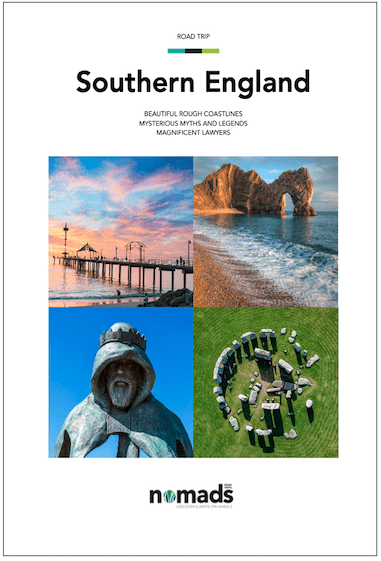
Southern England
This 1444 km road trip through Southern England starts in Dover, follows the chalk cliffs and coastline to the craggy cliffs of Land's End, and returns via the county of Cornwall, the thermal city of Bath, the mysterious Stonehenge, the Surrey Hills and Canterbury to its terminus in Dover.
Highlights along the way include the impressive chalk cliffs of the South Coast, New Forest National Park, the Isle of Purbeck, King Arthurs' Tintagel Castle, Exmoor National Park, the thermal city of Bath, the stone circle of Stonehenge, the Surrey Hills and Canterbury, centre of Christianity in England.
- Perfect travel companion if you want to discover southern England by motorhome, car or motorbike
- Clearly organised into 9 stages with 76 places of interest, travel tips, 27 walking routes, 24 cycling routes, local tourism services and places to stay (191 campsites and 105 motorhome sites)
- Available as PDF (travel guide 92 pages) in beautiful design, illustrated with inspiring texts and high-quality photography
- Includes interactive map for PC, tablet or smartphone so you have all information at hand on the road
- Includes GPX files so you can download the full route and all cycling and walking routes onto your GPS
Read the first chapter
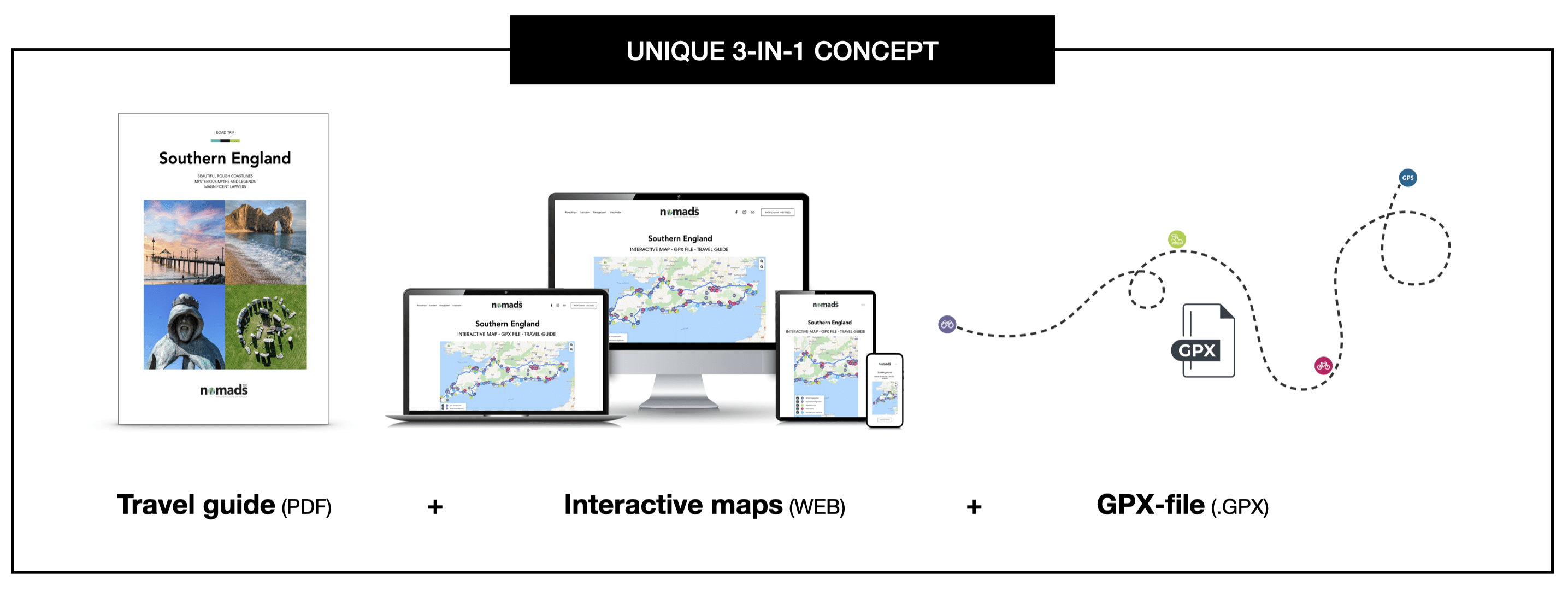
Some highlights on this road trip
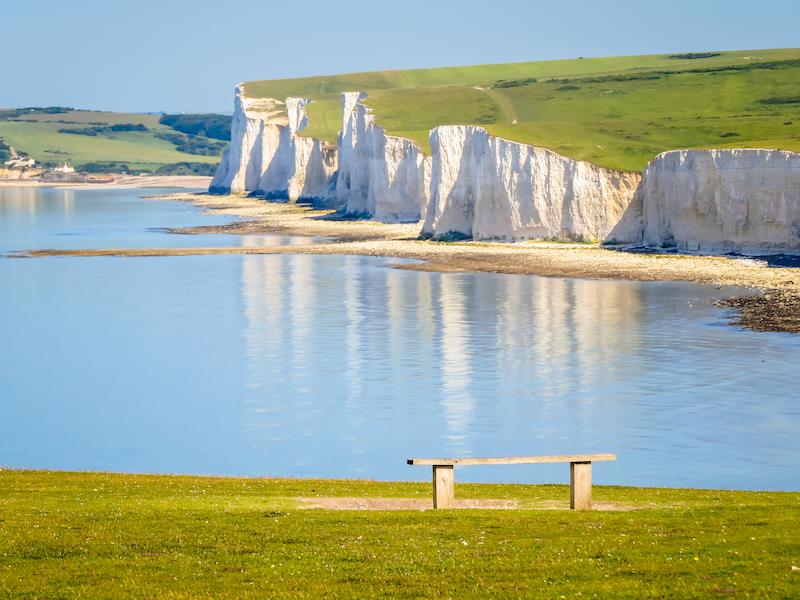
Dover - Brighton
The famous Dover Chalk Cliffs have attracted visitors for centuries. From the ferry, the impressive White Cliffs loom large. From Dover, we head directly south-west to avoid busy motorways - especially towards London.
On the way to Birling Gap, we drive past historic Hastings and Hastings Castle. The town has a lively fishing port and is characterised by unique wooden 'net shops' on the beach. Fishermen have been storing their fishing nets there for hundreds of years. From Hastings, we continue along the coast towards Brighton, stopping off at Beachy Head and Birling Gap. There, you can find the highest cliffs in England. The Seven Sisters cliffs are also beautiful to behold.
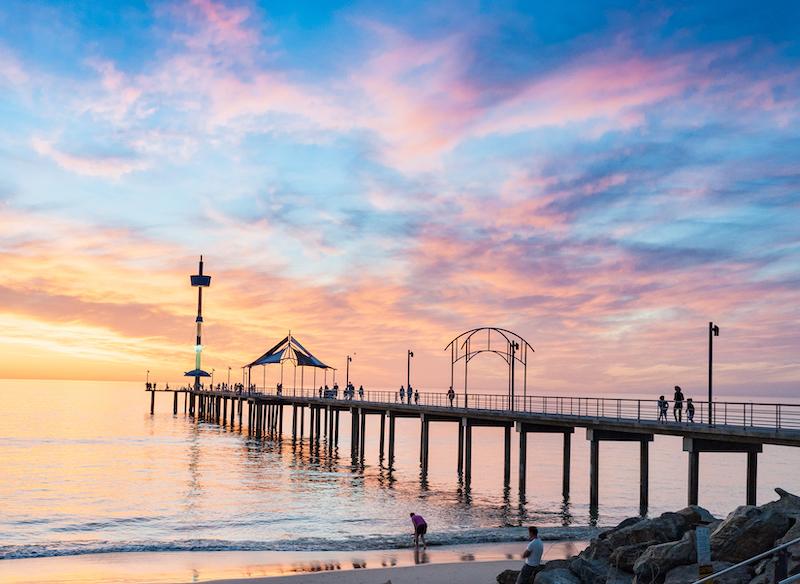
Brighton - Jurassic Coast
Our next stop is Brighton, England's first and most famous seaside resort. We cannot miss a visit to the beach and the famous pier. We are probably not the first ones to get back into the camper van burnt to a crisp.
About two hours away is Southampton, known among other things for the port where the Mayflower and the Pilgrim Fathers left for America. The Titanic also started her journey here. Enthusiasts can visit the Sea City Museum or make a nice walk along the remains of the medieval city wall.
After Southampton, we leave the cities behind and surround ourselves with the nature of the New Forest. This unique woodland and heathland landscape is the largest unfenced area in the South, covering 375 km². Despite its name, the New Forest is an ancient primeval forest. Beautiful walks and sightseeing are guaranteed from the motorhome, car or motorbike!
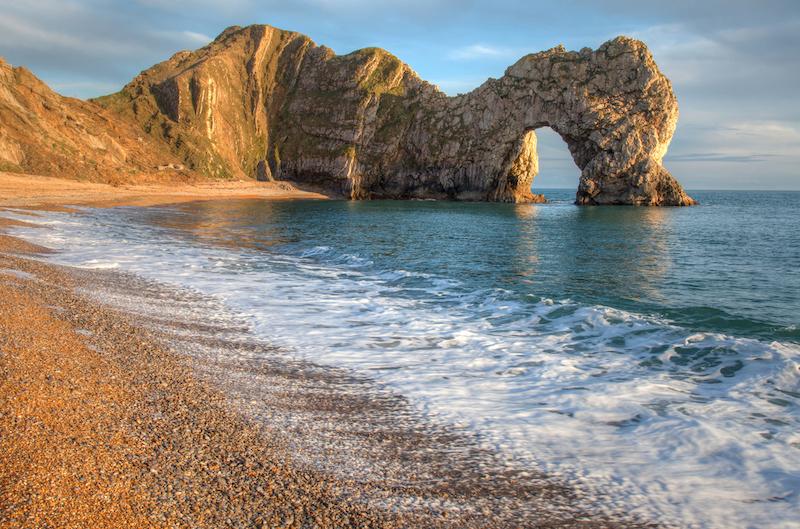
Jurassic Coast - Land's End
The Jurassic Coast stretches from Swanage to Exmouth. If you are making a longer trip, it is worth stopping at various places along the coast to walk or enjoy a hidden sandy beach. Popular seaside resorts alternate with intimate coves and unspoilt fishing villages. The cliffs of the Jurassic Coastline are from different eras. Thanks to the interesting geological history, you can still find fossils of dinosaurs. The area can get quite busy in high season. You can also choose to explore the quieter interior and Dorset.
If you've had enough of the coast, head towards Land's End via Dartmoor National Park. This road takes you through high pastures and moors, one of the most famous prisons, more prehistoric remains and cosy cottages.
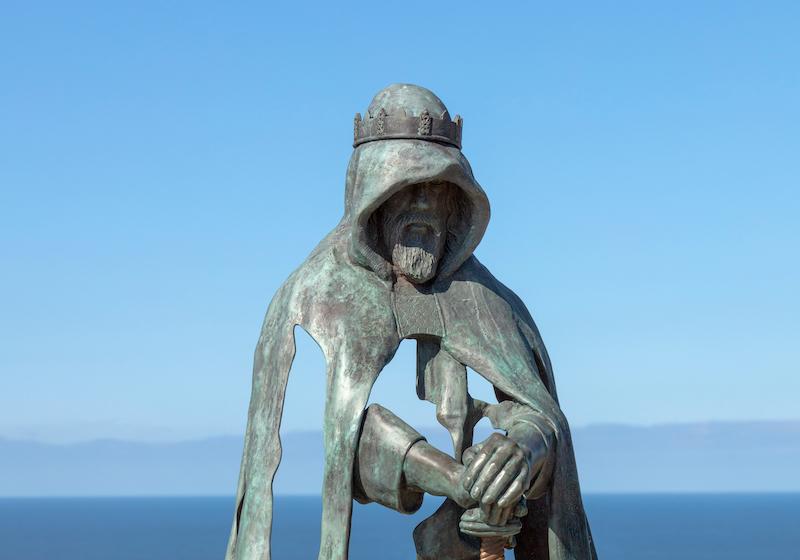
Land's End - Tintagel
The rugged cliffs of Land's End, England's westernmost point, are without exaggeration impressive. The car park can be a horror, especially during the summer months. Fortunately, there are quiet similar places, such as Nanjizal Beach a little further on. The seawater here is so clear that it feels like the Australian coast! At low tide, caves and anemone-covered rock pools become visible everywhere.
The county of Cornwall, with its moors and rugged moorland, has inspired many romantic legends, including that of the world-famous King Arthur. His probable birthplace, Tintagel Castle, is on the north coast. For the first time in over 500 years, the two separate halves of Tintagel have been reunited thanks to the Tintagel Castle Bridge. The castle and its surroundings are a great place to stop and dive into a fascinating history with myths that capture the imagination.
